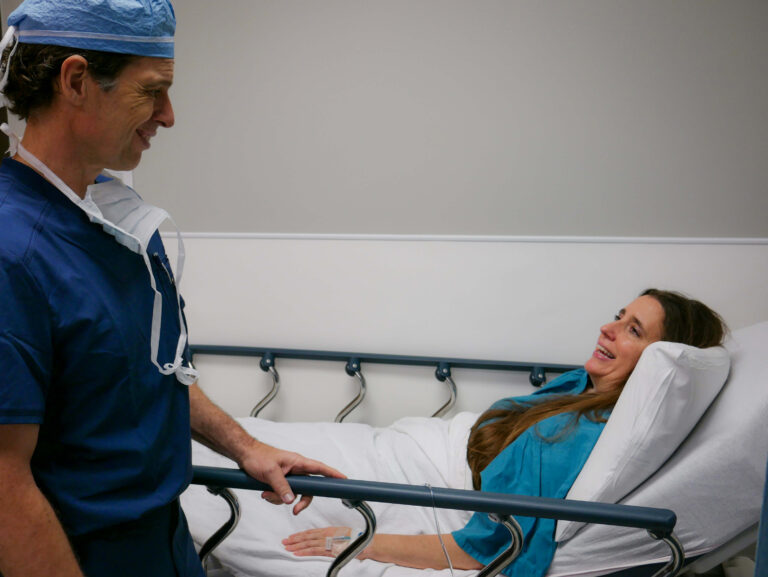Recovery After Uterine Fibroid Embolization

Millions of women experience symptomatic fibroids. Among the most effective treatment options for fibroids is uterine fibroid embolization (UFE).
UFE is a treatment option that offers exceptional outcomes for a diverse population of patients. UFE is a less invasive approach requiring a significantly shorter downtime than myomectomy or hysterectomy, yet it is often equally effective at shrinking fibroids to 30% of their size.
The procedure involves administering embolic materials through an arterial channel in the groin or wrist. The embolic agents inhibit the flow of blood to fibroids only, leaving overall blood supply to the uterus intact. Without a reliable blood supply, the fibroids shrink in size considerably.
UFE offers a success rate of over 85%, making it an excellent non-surgical fibroid treatment option and, in many cases, superior to more invasive surgical interventions.
Nevertheless, if you are considering undergoing UFE, it will help you to understand what the procedure involves and how to prepare for it.
At Dallas Fibroid Center, we offer compassionate guidance throughout the treatment process. Our team of experienced and empathetic specialists is here to help from the moment you begin your preoperative consultation to your final post-operative follow-up appointment. Here is what you need to know about UFE recovery.
What does UFE treatment involve?
Fibroid treatment with UFE does not require overnight stays. Typically, this fibroid treatment lasts less than an hour.
During UFE treatment, a puncture is made in the radial or femoral artery.
A catheter is guided through the artery using fluoroscopic x-ray technology. The catheter delivers embolic materials through the arterial vessel leading to the fibroids. Over time, the embolic agent inhibits blood flow to the tumors, causing them to significantly shrink.
When the embolization has been completed, the catheter is withdrawn, and a special closure device is placed over the puncture site.
Although preparing for the procedure is crucial, proper post-procedure care is equally important to ensure optimal outcomes.
What does UFE recovery involve?
It is common for women to feel abdominal cramping (resembling menstrual cramps or labor pains) following uterine fibroids treatment.
A nerve block is performed at the conclusion of the procedure to drastically reduce post-op pain and medications are prescribed to patients for pain management.
UFE Treatment in Dallas offers a minimally invasive option for fibroid treatment, helping manage symptoms effectively with reduced recovery time.
Occasionally, some people who've undergone UFE experience flu-like symptoms, which might include the following:
- Mild fever
- Abdominal discomfort
- Nausea
- Chills
- Low energy
Upon discharge, your doctor will provide information on how to care for yourself post-UFE.
It usually takes 7 to 10 days for patients to return to work and regular activity after UFE treatment.
Patients require follow-up for 1 year: one appointment scheduled 1 week after the procedure and the others 3, 6, 9, and 12 months later to monitor as fibroids shrink.
If you're curious about the recovery process and want to know how fast uterine fibroids shrink after embolization, you can read more about it here.
Uterine Fibroid Treatment in Dallas
If you are experiencing symptoms of uterine fibroids, a comprehensive consultation about your condition could be appropriate. If fibroids cause your concerns, A UFE procedure could help mitigate your symptoms.
By treating fibroid symptoms at their source, UFE is one of the most effective and efficient ways to safeguard your uterus and alleviate discomfort. There's no need to endure fibroid pain.
UFE has minimal downtime, so you can quickly resume your routine and enjoy your favorite activities.
Contact us today to begin your fibroids-free future.
Learn More About Uterine Fibroid Embolization (UFE):







